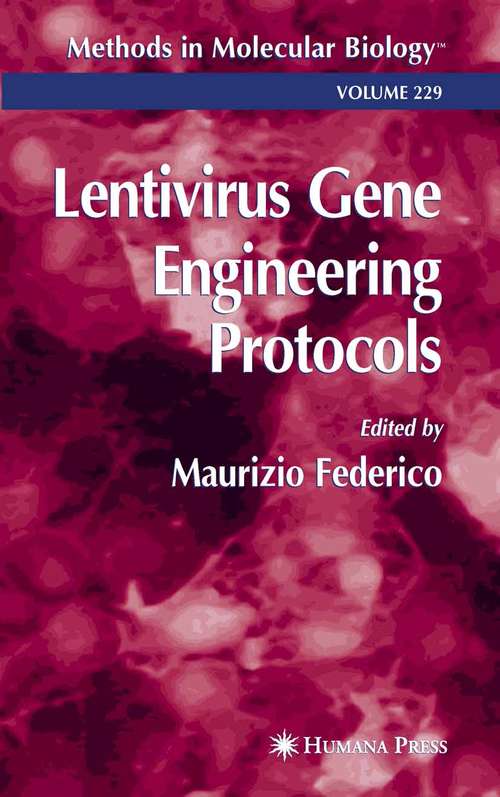Lentivirus Gene Engineering Protocols
By:
Sign Up Now!
Already a Member? Log In
You must be logged into Bookshare to access this title.
Learn about membership options,
or view our freely available titles.
- Synopsis
-
Lentivirus vector-based technologies, through in vitro and in vivo gene transfer in eukaryotic animal cells, currently offer the most promising opportunities for curing genetic disorders, as well as cancer and infectious diseases. In Lentivirus Gene Engineering Protocols, Maurizio Federico has assembled a panel of outstanding experimenters to detail all the theoretical and practical aspects of lentivirus vector-based gene transfer. The authors demonstrate lentivirus vector production with detailed methods for recovering appropriate producer cells, for producing and titrating lentivirus-containing supernatants, and for detecting transduced cells. The applications of lentivirus vector engineering to different cell types include coverage of lymphocytes, dendritic cells, hematopoietic stem and progenitor cells, mesenchymal stem cells, hippocampal neurons, cardiomyocytes, as well as airway epithelia, corneal cells, and retinal pigment. The use of non-HIV-1-based lentivirus vectors is shown to be advantageous, particularly those obtained from the genomes of HIV-2, SIV, or FIV. Also advanced are applications in which genetic material is directly inoculated with lentivirus vectors in such experimental animal models as mouse, rat, and rabbit.
Comprehensive and informative, Lentivirus Gene Engineering Protocols presents a broad spectrum of the latest methods of lentivirus vector technology, offering hematologists, neurologists, geneticists, and virologists the most promising and up-to-date tools available for gene therapy in such still fatal diseases as cancer, cystic fibrosis, and AIDS.ctical aspects of lentivirus vector-based gene transfer. The authors demonstrate lentivirus vector production with methods for recovering appropriate producer cells, for producing and titrating lentivirus-containing supernatants, and for detecting transduced cells. The applications of lentivirus vector engineering to different cell types include coverage of lymphocytes, dendritic cells, hematopoietic stem and progenitor cells, mesenchymal stem cells, hippocampal neurons, cardiomyocytes, as well as airway epithelia, corneal cells, and retinal pigment. Also advanced are applications in which genetic material is directly inoculated with lentivirus vectors in such experimental animal models as mouse, rat, and rabbit.
- Copyright:
- 2003
Book Details
- Book Quality:
- Publisher Quality
- ISBN-13:
- 9781592593934
- Related ISBNs:
- 9781588290915
- Publisher:
- Humana Press, Totowa, NJ
- Date of Addition:
- 12/13/16
- Copyrighted By:
- Humana Press, Totowa, NJ
- Adult content:
- No
- Language:
- English
- Has Image Descriptions:
- No
- Categories:
- Nonfiction, Science
- Submitted By:
- Bookshare Staff
- Usage Restrictions:
- This is a copyrighted book.
